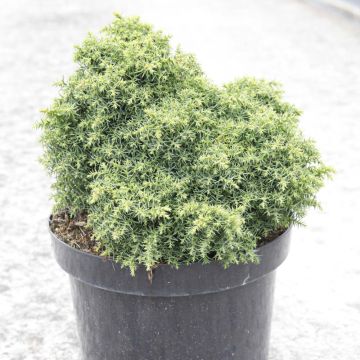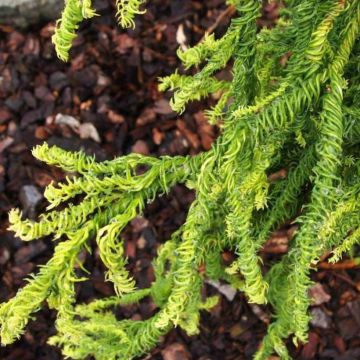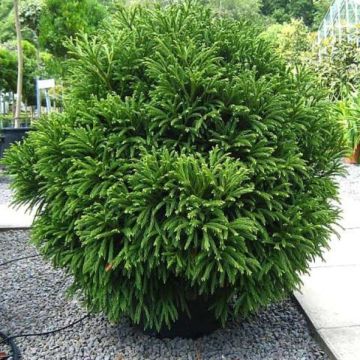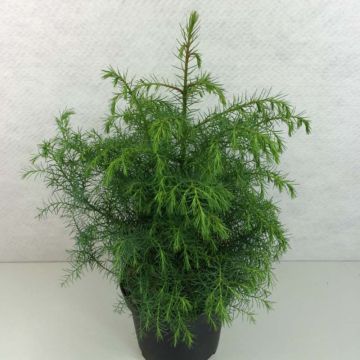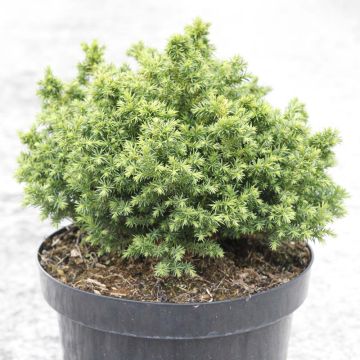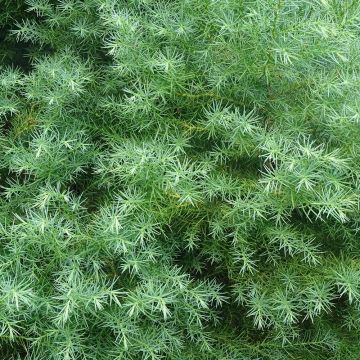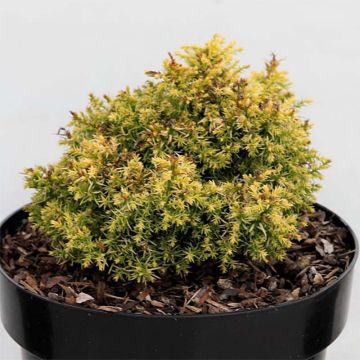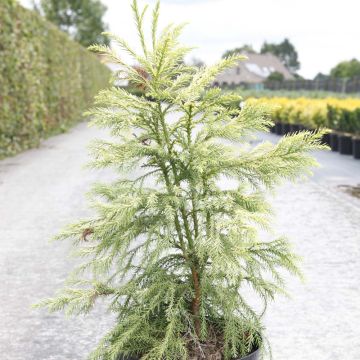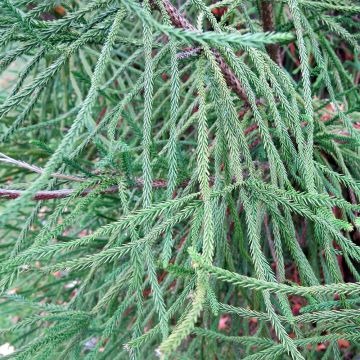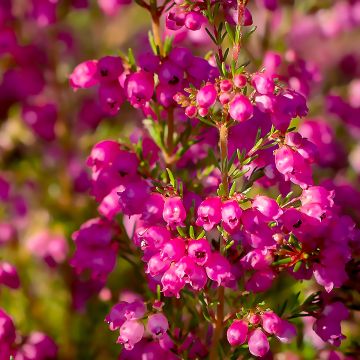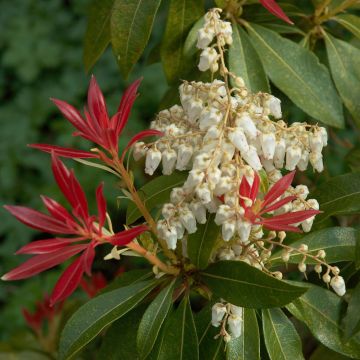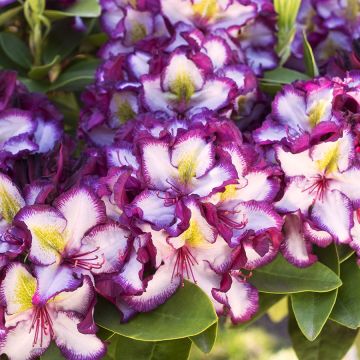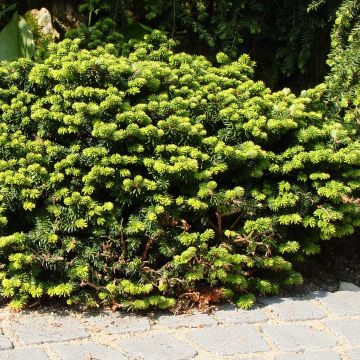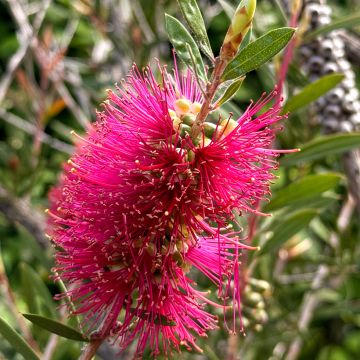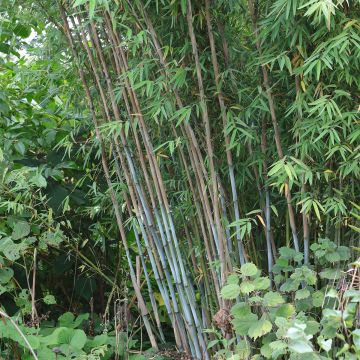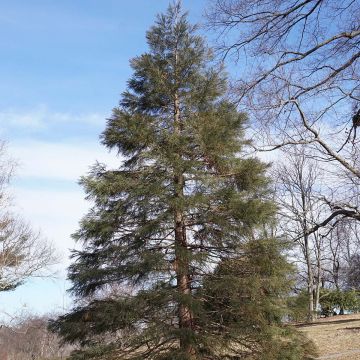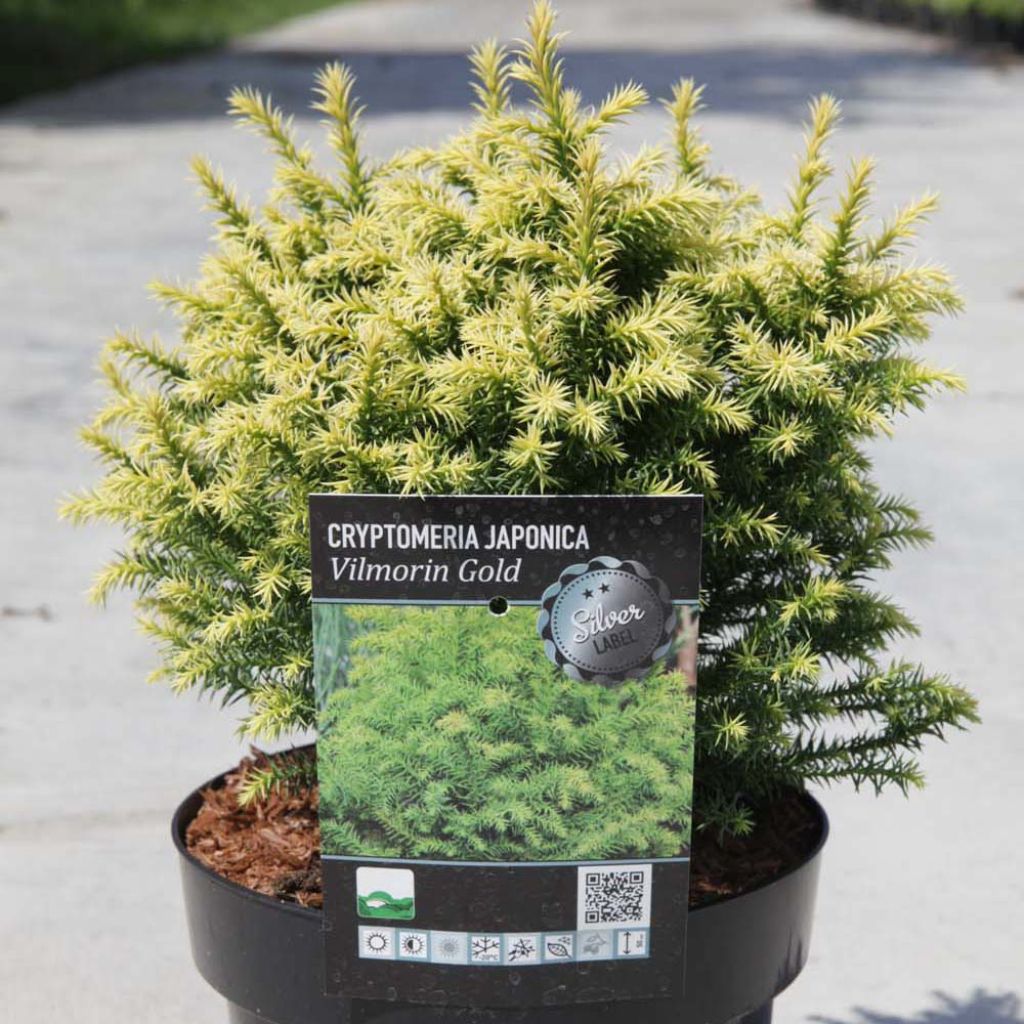

Cryptomeria japonica Vilmorin Gold
Cryptomeria japonica Vilmorin Gold
Cryptomeria japonica Vilmorin Gold
Japanese Cedar, Sugi, Japanese Redwood
This item cannot be shipped to the selected country
Delivery charge from €5.90
Delivery charge from €5.90
Delivery to Corse prohibited
More information
Schedule delivery date,
and select date in basket
This plant carries a 24 months recovery warranty
More information
We guarantee the quality of our plants for a full growing cycle, and will replace at our expense any plant that fails to recover under normal climatic and planting conditions.
From €5.90 for pickup delivery and €6.90 for home delivery
Express home delivery from €8.90.
From €5.90 for pickup delivery and €6.90 for home delivery
Express home delivery from €8.90.
Delivery to Corse prohibited: UE law prohibits the import of this plant from mainland France to Corse as part of the fight against Xylella fastidiosa. Please accept our sincere apologies.
More information

Does this plant fit my garden?
Set up your Plantfit profile →
Description
Cryptomeria japonica 'Vilmorin Gold' is a dwarf form of Japanese Cedar. Growing very slowly, this small conifer forms a dense, somewhat irregular ball, adorned with bright golden young shoots that become cream-coloured in summer. The autumn foliage displays bronze-pink hues, while the adult foliage is a beautiful, light, vivid green. Low maintenance and hardy, it allows for unexpected and colourful combinations in rock gardens and alpine gardens. It thrives in full sun, in moist but well-drained ordinary soil that is not too dry.
Cryptomeria japonica is a large conifer from the Cupressaceae (formerly Taxodiaceae) family, native to Japan. In its country of origin, this tree is commonly planted around religious temples. It thrives in a mild oceanic climate, both humid all year round and mild in winter. In Asia, this forest tree with a sequoia-like appearance can reach heights of up to 60m (197ft, with a trunk diameter of 4m (13ft) covered in a red-brown bark that peels off in vertical strips. In our latitudes, it still reaches heights of 30 to 40m (99ft to 131ft). The evergreen foliage of this conifer is composed of spirally arranged needles on the branchlets. Japanese Cedar has given rise to numerous cultivars selected for their small size, foliage appearance, cold resistance, and better tolerance to our soils and average climates.
'Vilmorin Gold' is a mutation of the famous British cultivar 'Vilmoriniana'. As its name suggests, this small conifer is adorned with golden young shoots in spring. Growing very slowly, it will reach 60cm (24in) in all directions by the age of 10 years and hardly more than 1.5m (5ft) after many years. Its overall habit is globular, with dense vegetation composed of short branches. The adult foliage, also very dense, consists of short, curved needles of a beautiful, light, and vivid green. The young shoots change from golden yellow to cream-white before turning bronze-pink to reddish under the effect of cold. This variety is hardy down to -20°C (-4°F).
Cryptomeria japonica 'Vilmorin Gold' deserves more attention. With its easy cultivation, personality, and very small size, it is a perfect plant for rock gardens, flower beds, and terraces. This plant pairs well with large stones, geometric lines, and masonry structures. It can be planted with other shrubs for rock gardens (Abelia prostrata, Berberis darwinii or B. thunbergii atropurpurea 'Nana', and heathers), dwarf conifers with globular, columnar, or a prostrate habit (Juniperus horizontalis 'Blue Chip') in different colours. The architectural qualities of conifers naturally impose themselves in the design of a contemporary garden, which prefers the aesthetics of shapes, silhouettes, and textures over the fleeting beauty of flowers. These plants, with their reassuring permanence, provide lasting structure to a flower bed. They also mark pathways, and border terraces, easily replacing the strong presence of trimmed boxwood or holly. The key is to play with volumes and colours.
Report an error about the product description
Cryptomeria japonica Vilmorin Gold in pictures
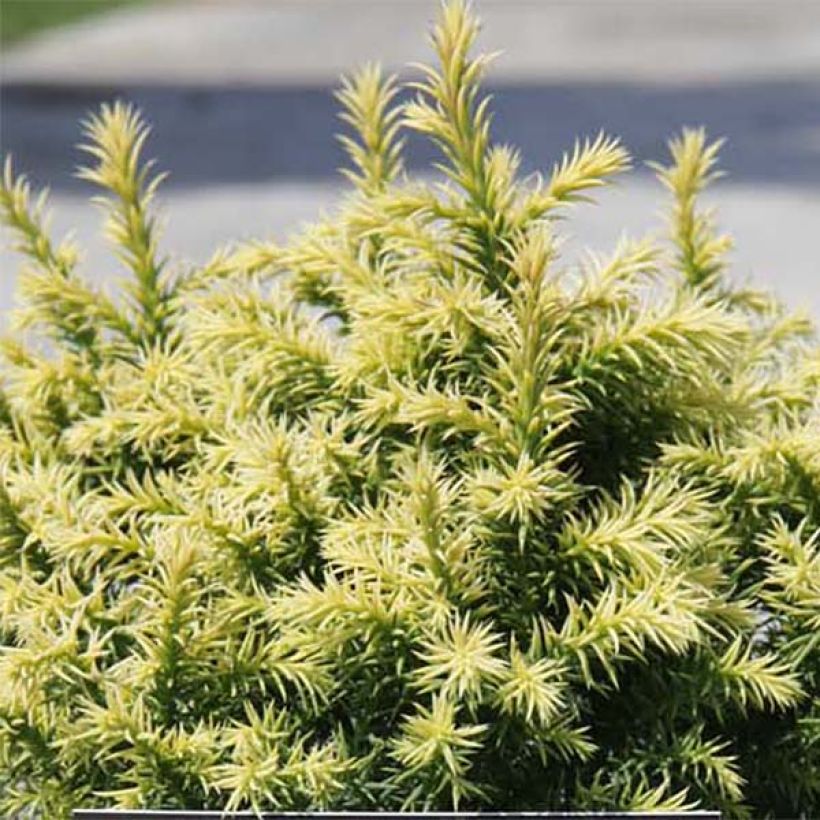

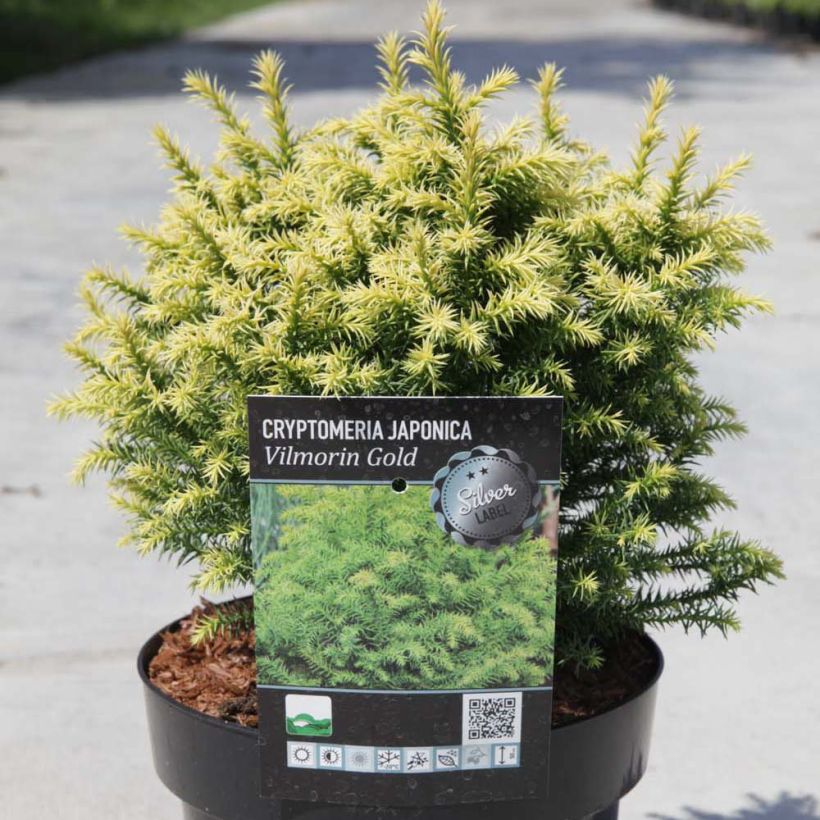

Plant habit
Foliage
Safety measures
Botanical data
Cryptomeria
japonica
Vilmorin Gold
Taxaceae
Japanese Cedar, Sugi, Japanese Redwood
Cultivar or hybrid
atteinterespiratoire
Cette plante peut entraîner des symptômes allergiques.
Evitez de la planter si vous ou vos proches souffrez de rhinite saisonnière ("rhume des foins").
Davantage d'informations sur https://plantes-risque.info
Other Cryptomeria
Planting and care
Cryptomeria japonica should be planted from September to November and from February to June in moist but well-drained, rather fertile, neutral or acidic, ordinary soil without excess limestone. It cannot tolerate excessively dry or too shallow soils. Choose a sunny location or, at worst, semi-shaded. This variety is resistant to wind. Soak the roots well before planting. Add organic matter to the planting hole and water generously in the first years, and in case of prolonged drought. Apply a special conifer fertiliser every year in April and weed the soil in summer. This conifer is hardy to at least -15°C (5°F). Pruning is not necessary.
Planting period
Intended location
Care
-
, onOrder confirmed
Reply from on Promesse de fleurs
Evergreen shrubs
Haven't found what you were looking for?
Hardiness is the lowest winter temperature a plant can endure without suffering serious damage or even dying. However, hardiness is affected by location (a sheltered area, such as a patio), protection (winter cover) and soil type (hardiness is improved by well-drained soil).

Photo Sharing Terms & Conditions
In order to encourage gardeners to interact and share their experiences, Promesse de fleurs offers various media enabling content to be uploaded onto its Site - in particular via the ‘Photo sharing’ module.
The User agrees to refrain from:
- Posting any content that is illegal, prejudicial, insulting, racist, inciteful to hatred, revisionist, contrary to public decency, that infringes on privacy or on the privacy rights of third parties, in particular the publicity rights of persons and goods, intellectual property rights, or the right to privacy.
- Submitting content on behalf of a third party;
- Impersonate the identity of a third party and/or publish any personal information about a third party;
In general, the User undertakes to refrain from any unethical behaviour.
All Content (in particular text, comments, files, images, photos, videos, creative works, etc.), which may be subject to property or intellectual property rights, image or other private rights, shall remain the property of the User, subject to the limited rights granted by the terms of the licence granted by Promesse de fleurs as stated below. Users are at liberty to publish or not to publish such Content on the Site, notably via the ‘Photo Sharing’ facility, and accept that this Content shall be made public and freely accessible, notably on the Internet.
Users further acknowledge, undertake to have ,and guarantee that they hold all necessary rights and permissions to publish such material on the Site, in particular with regard to the legislation in force pertaining to any privacy, property, intellectual property, image, or contractual rights, or rights of any other nature. By publishing such Content on the Site, Users acknowledge accepting full liability as publishers of the Content within the meaning of the law, and grant Promesse de fleurs, free of charge, an inclusive, worldwide licence for the said Content for the entire duration of its publication, including all reproduction, representation, up/downloading, displaying, performing, transmission, and storage rights.
Users also grant permission for their name to be linked to the Content and accept that this link may not always be made available.
By engaging in posting material, Users consent to their Content becoming automatically accessible on the Internet, in particular on other sites and/or blogs and/or web pages of the Promesse de fleurs site, including in particular social pages and the Promesse de fleurs catalogue.
Users may secure the removal of entrusted content free of charge by issuing a simple request via our contact form.
The flowering period indicated on our website applies to countries and regions located in USDA zone 8 (France, the United Kingdom, Ireland, the Netherlands, etc.)
It will vary according to where you live:
- In zones 9 to 10 (Italy, Spain, Greece, etc.), flowering will occur about 2 to 4 weeks earlier.
- In zones 6 to 7 (Germany, Poland, Slovenia, and lower mountainous regions), flowering will be delayed by 2 to 3 weeks.
- In zone 5 (Central Europe, Scandinavia), blooming will be delayed by 3 to 5 weeks.
In temperate climates, pruning of spring-flowering shrubs (forsythia, spireas, etc.) should be done just after flowering.
Pruning of summer-flowering shrubs (Indian Lilac, Perovskia, etc.) can be done in winter or spring.
In cold regions as well as with frost-sensitive plants, avoid pruning too early when severe frosts may still occur.
The planting period indicated on our website applies to countries and regions located in USDA zone 8 (France, United Kingdom, Ireland, Netherlands).
It will vary according to where you live:
- In Mediterranean zones (Marseille, Madrid, Milan, etc.), autumn and winter are the best planting periods.
- In continental zones (Strasbourg, Munich, Vienna, etc.), delay planting by 2 to 3 weeks in spring and bring it forward by 2 to 4 weeks in autumn.
- In mountainous regions (the Alps, Pyrenees, Carpathians, etc.), it is best to plant in late spring (May-June) or late summer (August-September).
The harvesting period indicated on our website applies to countries and regions in USDA zone 8 (France, England, Ireland, the Netherlands).
In colder areas (Scandinavia, Poland, Austria...) fruit and vegetable harvests are likely to be delayed by 3-4 weeks.
In warmer areas (Italy, Spain, Greece, etc.), harvesting will probably take place earlier, depending on weather conditions.
The sowing periods indicated on our website apply to countries and regions within USDA Zone 8 (France, UK, Ireland, Netherlands).
In colder areas (Scandinavia, Poland, Austria...), delay any outdoor sowing by 3-4 weeks, or sow under glass.
In warmer climes (Italy, Spain, Greece, etc.), bring outdoor sowing forward by a few weeks.

































